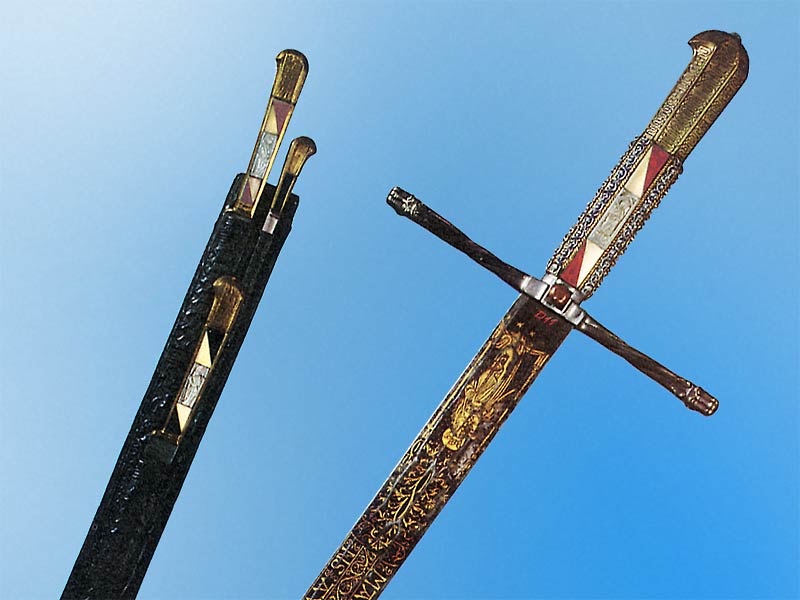Nice piece Michael

As has broadaxe cleverly pointed out the hilt and more elaborate guard shows more central european origin than oriental / central asian.
Thus I would kindly disagree (if I may

) on terming the weapon a "sabre". It is true that such pieces are sometimes hard to label by precise definition and often fall into several categories , yet I would like to bring up one point.
The most prominent feature of a "sabre-proper" (for lack of a better term) seems to be its canted hilt (at the very end , usually accompanied by a small pommel) and , not so much the curved blade (overall it gives you a kind of a "S" profile ; mind you there are various breeds of single edged and curved bladed swords , messers and falchions that arent really a product of central asian influences).
For comparison look at the hilt on the original weapon posted by Michael/Matchlock and compare it with these:
sword of sultan mehmed :

Note the canted hilt at the end.. also the curvature on the blade isnt so much dramatic , but the overall "S" profile can be visible
To give some other examples of typical sabre hilts here is a
Classical Hungarian 17th century sabre (again the way how the hilt ends is interesting):

15th century "Schiavonesca" saber :

Note that despite having a sword-like hilt it is indeed canted at the end and again forms a sort of a overall S-profile.
A closeup on the messer that belonged to Kaiser Maximmilian I :

One can spot the "knife like" ending , with the grip being straight, which is different to that of central asian influenced sabres. Going further some messers actually have quite a curve on their blade (albeit without the yelmen , another "saberish" feature which is missing on Michaels piece). Of course there are examples that are a bit of "wild cards" and have both sabre as well as "genuine european messer" features ,but they seem to be quite rare.
For those aforementioned reasons I would somewhat hestiate calling it a sabre. Not here to spark any heated debate , but I am geninuely interested whats your take on the issue.
Regards,
Samuel